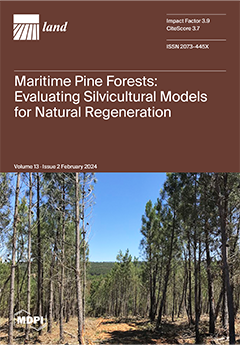Understanding the actual soil salt ion content and salt type is one of the important prerequisites for determining the nature of saline soils and their development and utilization in drylands. Desert–sierozem soils are widely distributed in the plains between the northern piedmont of the Tianshan Mountains and the Gurbantunggut Desert in Xinjiang, Northwest China, which contain abundant calcium sulfate (gypsum) and calcium carbonate and are high-quality arable land resources for agriculture. These soils have been extensively reclaimed for farmland in recent decades. In this study, 10 plots of desert–sierozem soils with different tillage years in the Qitai Oasis plain area in the northern piedmont of Tianshan Mountain were studied. Three soil profiles were excavated in each sample plot with a depth of 1.2 m. A total of 30 farmland profiles were dug up and sampling was conducted according to the soil occurrence layers of the farmland. All the soil samples were predominantly sandy in texture, with more than 92% of the soil particles distributed between 0.05 and 0.25 mm, and less than 8% between 0.002 and 0.05 mm. Conventional water extraction (CWE) and intensified water extraction (IWE) were adopted to extract the water-soluble salt ions content of K
+, Na
+, Ca
2+, Mg
2+, Cl
−, SO
42−, HCO
3− and CO
32−, and this study compared the extraction results using two different methods with varying extraction strengths. Additionally, the calcium sulfate and calcium carbonate contents were obtained using the chemical extraction and mineral assay methods, respectively. Differences in the salts and salt types in desert–sierozem soils with different tillage years were analyzed, and the effect of calcium sulfate on the inorganic carbon sinks in plowed desert–sierozem soil was demonstrated. The findings indicated that the standard conventional extraction procedure involving a 5:1 water–soil ratio and 3 min of shaking was inadequate for accurately measuring the soil salt content in high calcium sulfate content desert–sierozem soils. With the IWE method, by increasing the water–soil ratio, prolonging the shaking time, and grinding the particles finer, the amount of water-soluble salts extracted using the IWE method was 5.83 times higher than that of the conventional method. Among them, the average content of IWE-Mg
2+ increased by 123.41 mg kg
−1 compared to CWE-Mg
2+, the average content of IWE-Ca
2+ was 3.82 times higher than CWE-Ca
2+, with an average increase of 2931.59 mg kg
−1, and the IWE-SO
42− content was 5.96 times higher than CWE-SO
42−, with an average increase of 8658.95 mg kg
−1. A markedly negative correlation (
p < 0.01) was observed between calcium carbonate and calcium sulfate in desert–sierozem soils after tillage. The calcium sulfate content consistently decreased and calcium carbonate increased with an increasing number of tillage years. The pedogenic calcium carbonate content in desert–sierozem soils increased by an average of 10.86 g kg
−1 after more than 40 years of cultivation, and the transfer of Ca
2+ from calcium sulfate to calcium carbonate was identified as the cause of the increase in the soil inorganic carbon sink. Overall, a new method for extracting water-soluble salts was utilized for aridisols, which commonly consist of complex salt types. The results elucidate the changes in salinity within plowed desert–sierozem soils as well as the impact of soil salt on soil inorganic carbon sinks. Based on our research, desert–sierozem soils are well suited for agricultural farming because they contain high levels of sulfate, which is one of the important inorganic nutrients essential for crops, and it also provides a source of calcium for increasing inorganic carbon sinks. This study serves as a reference and scientific basis for soil carbon cycles in arid zones.
Full article





